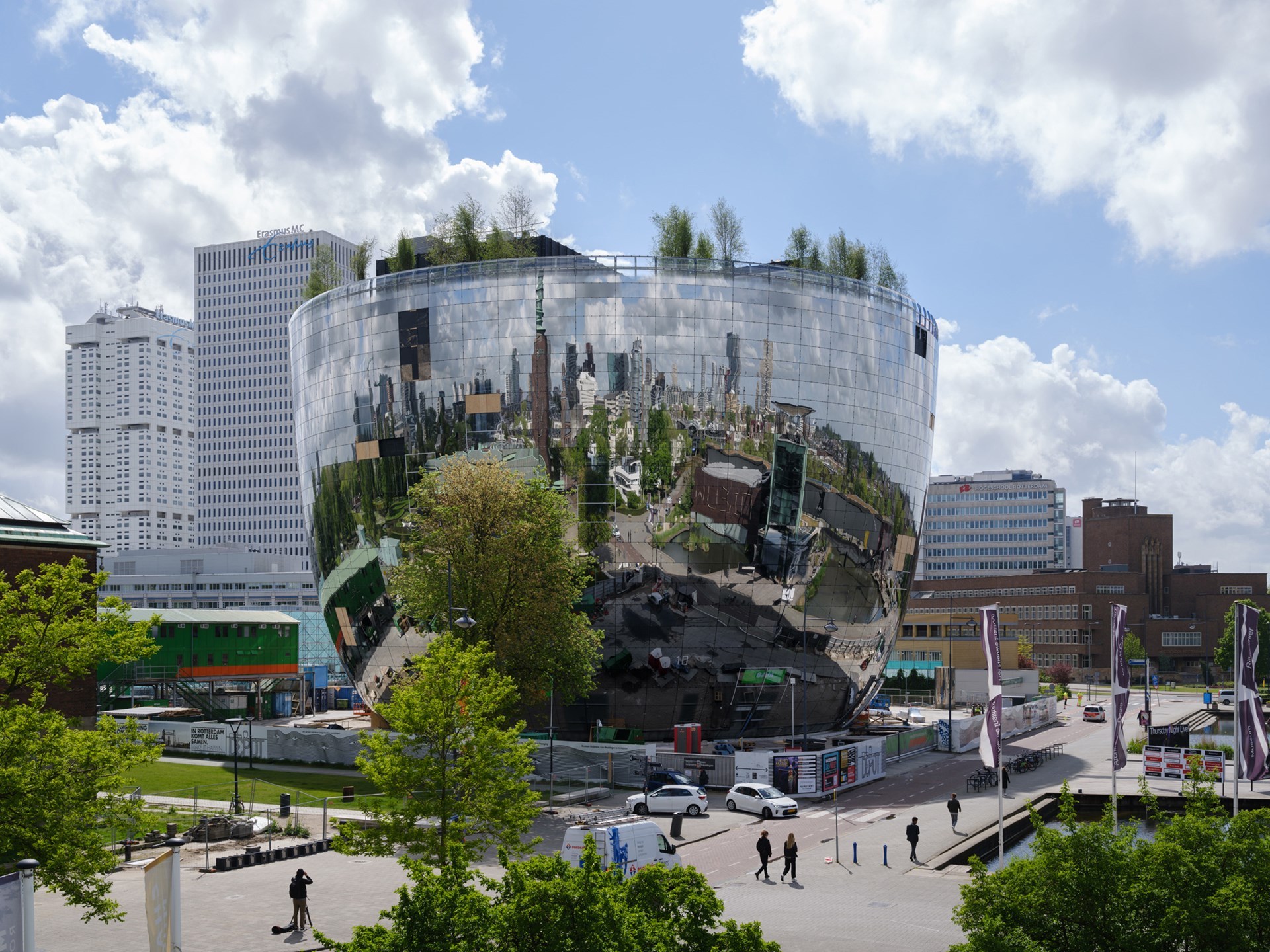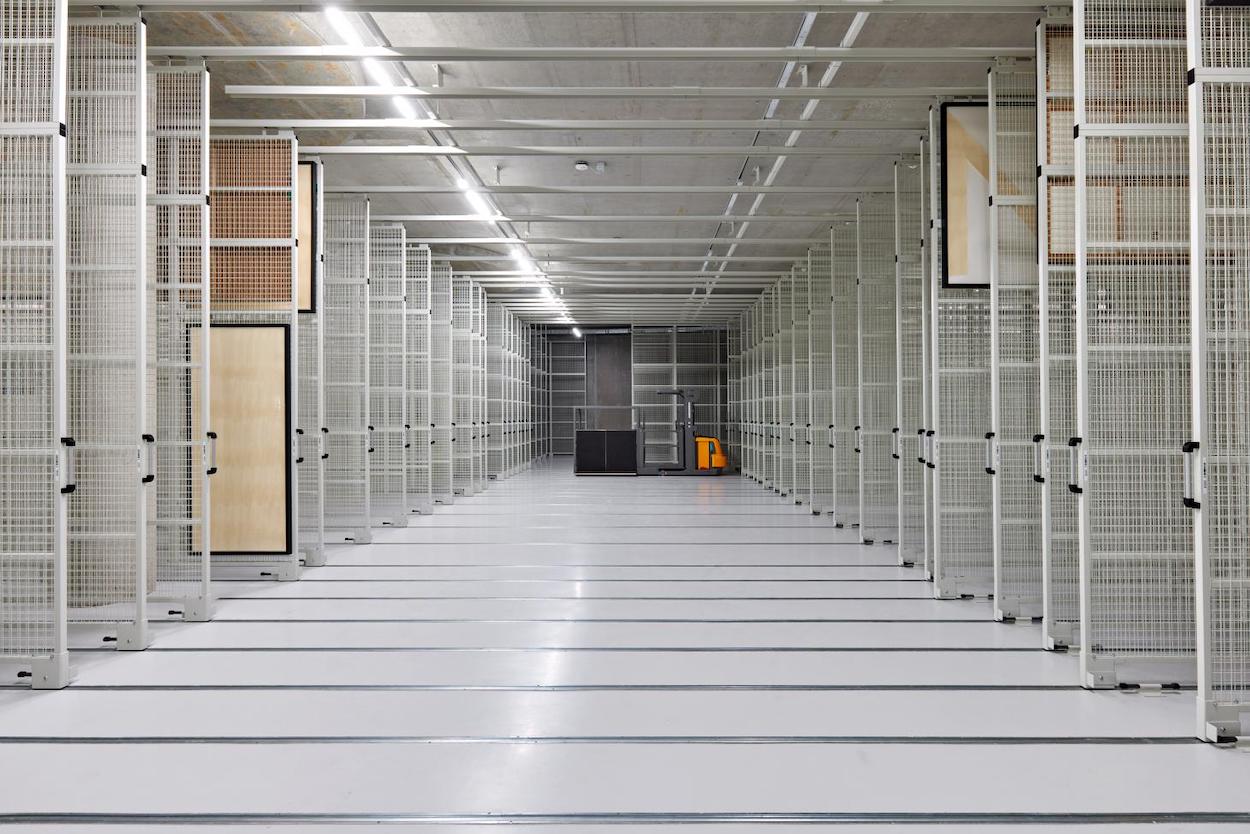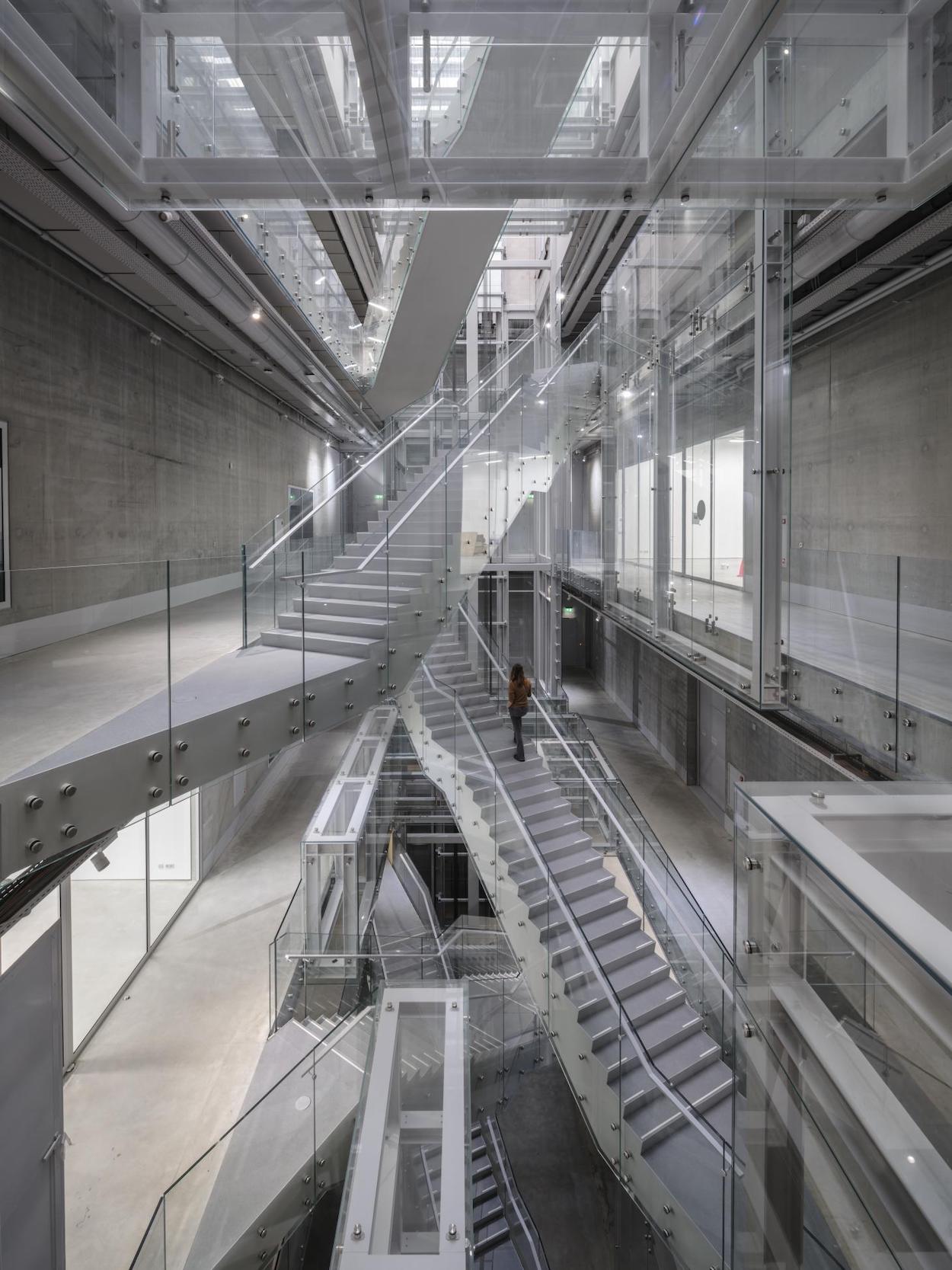Did you know that most museums only showcase around seven percent of their collections at any given time? The vast majority of a museum’s holdings are often hidden from view in vast storage depots that otherwise aren’t accessible to the public. Seeking to buck this trend, the Museum Boijmans Van Beuningen in Rotterdam is making close to 99 percent of its collection of 151,000 artifacts available for public viewing even as they’re stored.
They’ll appear inside the neighboring Depot Boijmans Van Beuningen, a 130-foot-tall bowl-shaped structure clad entirely in mirrored panels designed by Dutch firm MVRDV that’s preparing to open this fall. The depot will sit within Rotterdam’s Museumpark, a sweeping public space designed by Yves Brunier with OMA in the 1990s. The facade’s mirrored glass panels—1,664 in total stretching across 71,000 square feet—reflect Museumpark’s greenery, allowing the monolithic structure to blend seamlessly into its surroundings despite its rather large size. MVRDV partner Fokke Moerel likens the effect to “a painting, reflecting the complete skyline of Rotterdam, plus the ever-changing sky, like life in a painting.”
The Depot offers guests both a bona fide museum experience as well as a behind-the-scenes look into the conservation techniques used to safeguard art holdings. Storage depots occupy floors one to five, which connect thanks to a soaring atrium punctuated by criss-crossing poured concrete stairs that feel reminiscent of the etchings of Giovanni Piranesi. They’ll reach all the building’s public areas, which include a restaurant designed by Dutch firm Concrete and rooftop sculpture garden populated with 75 birch trees.
Museumgoers can watch the conservation and preservation process from outside the four restoration studios through transparent glass walls and 13 suspended glass display cases that peek inside the meticulously organized archives. “We developed a system where you can see the exhibits at all angles,” says MVRDV co-founder Winy Maas. “You can even walk on top of them, or see them below from the glass bridges.” Works will be stored in five different climatic zones based on their material’s preservation needs and humidity requirements rather than artistic movements or eras. Projection rooms, meanwhile, can be used to view the museum’s extensive film and video collection.
Though the Depot Boijmans Van Beuningen might be the one of the few institutions to make a museum’s holdings almost entirely accessible to the public, like-minded facilities have started to take shape. The Louvre recently opened a giant conservation center in northern France that holds one-third of the museum’s collection—spanning hundreds of thousands of works—in a state-of-the-art building designed by Rogers Stirk Harbour + Partners. The facility became one of Europe’s largest art research centers when it opened in February.




